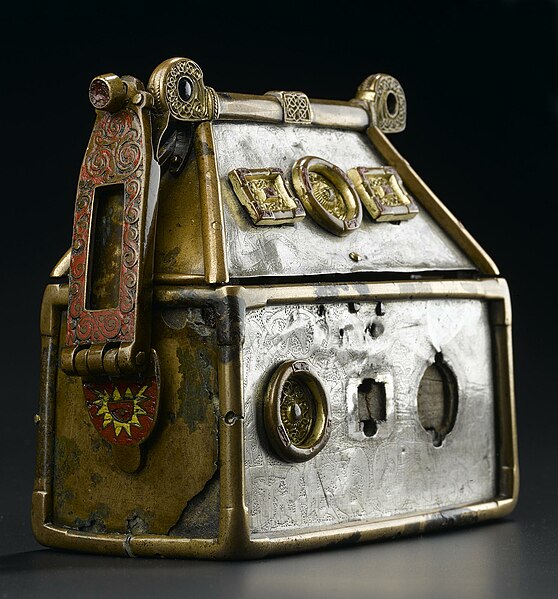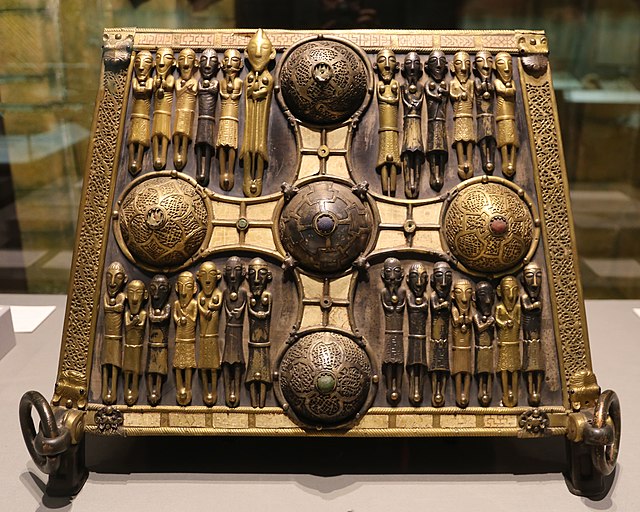The Monymusk Reliquary is an eighth century Scottish house-shape reliquary made of wood and metal characterised by an Insular fusion of Gaelic and Pictish design and Anglo-Saxon metalworking, probably by Ionan monks. It is now in the National Museum of Scotland in Edinburgh.
The Monymusk Reliquary, early 8th century, National Museum of Scotland
Front view; one of two enamelled hinge plates survive that would have attached a strap so that the reliquary could be carried, possibly around the neck.
The casket and lid are each carved from a solid piece of wood, and covered in thin bronze and silver plates.
Side view
House-shaped shrine are early medieval portable metal reliquary formed in the shape of the roof of a rectangular building. They originate from both Ireland and Scotland and mostly date from the 8th or 9th centuries. Typical example consist of a wooden core covered with silver and copper alloy plates, and were built to hold relics of saints or martyrs from the early Church era; a number held corporeal remains when found in the modern period, presumably they were parts of the saint's body. Others, including the Breac Maodhóg, held manuscripts associated with the commemorated saint. Like many Insular shrines, they were heavily reworked and embellished in the centuries following their initial construction, often with metal adornments or figures influenced by Romanesque sculpture.
The Monymusk Reliquary, early 8th century, National Museum of Scotland
Saint Manchan's Shrine, 12th-century
Side view of Saint Manchan's Shrine, 12th century
19th c drawing of one of the gabled sides of the Lough Erne Shrine






